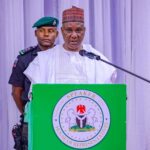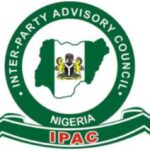If anyone from Europe, America or from another planet last visited Nigeria in 1960 and is invited to our 60th independence anniversary celebration, he will miss his destination, literally.
We are not the same place that he left 60 years ago, so our returnee visitor should prepare for the shock of his life.
- Nigeria@60: China awards 49 UniAbuja students N4.9m education grant
- No cracks, Nigeria remains indivisible — FG
Our population has changed beyond recognition.
From about 50 million in 1960, we are now 200 million and growing by leaps and bounds.
Towns and cities have sprung up in places that were once bush for miles on end.
In the 1990s when INEC’s predecessor mapped out voting areas, Gwarinpa in the FCT was a tiny village.
But when INEC did a general voters’ registration in 2011, it found in Gwarinpa the biggest residential estate in West Africa, leading to overflow crowds and much confusion in the exercise.
Visitor won’t recognize our environment.
Up until the 1970s, Geography textbooks classified most of Northern Nigeria as Guinea and Sudan savannah.
Only one small strip of land in the extreme North East corner was classified as Sahel savannah.
Today, foreign agencies glibly place Nigeria in the “Sahelian zone,” together with countries sitting pretty in the Desert.
Personally, I won’t complain because I know that in the late 1960s, we used to see big bustards, warthogs and antelopes on the 32km road between Jega and Birnin Kebbi.
These days you are lucky to see a few spectacled pigeons.
- Call for restructuring
Don’t be deceived by people calling for restructuring; Nigeria has already undergone structural change beyond recognition.
In 1960 we had only three regions and 24 provinces, subdivided into divisions and districts.
We went from three regions to four.
In 1967 we created something called states, 12 of them.
We later increased these to 19, then 21, then 30, then 36 plus one attachment called FCT.
In 1976 when we restructured Native Authorities into local government areas [LGAs], there were 300 of them.
Over the years these ballooned to 774, each with its own werewolf bureaucracy that mostly functions but once in a month, on payday.
In the 1960s and early 1970s, Geography textbooks taught us that Ibadan was the biggest city in West Africa, followed by Lagos, Oyo, Osogbo and Kano.
Since then, millions of Ibadan’s people have migrated to Lagos.
In 1992 when Oyo State government sued National Population Commission for undercounting, NPC told the Census Tribunal that during its pre-census survey, it found that 20% of the houses in Ibadan were unoccupied.
Lagos, meanwhile, has grown to rival Cairo.
- Evolution of Abuja
Up until 1980 there was a rusty small town in central Nigeria called Abuja but today, our visitor will find a gleaming new city with that name that sprang out of nowhere.
The tiny old Abuja town beside a huge rock that British colonial officials first visited in 1903 is still there, but is now called Suleja.
In 1960 when our visitor left, only four towns in Nigeria, namely Lagos, Ibadan, Enugu and Kaduna, called themselves “capital”.
Today, one town calls itself Federal Capital and 36 towns call themselves state capital, each spending itself into bankruptcy to build Government House, state secretariat, state assembly complex, high court complex, commissioners’ quarters, housing estates and a “befitting” sports stadium.
Nearly every federal ministry and dozens of federal agencies have offices in every state capital, so much so that there are departments in Governors’ offices responsible for liaison with federal agencies in the state.
Since 1960, Nigerian roads and bridges at first tremendously improved, then relapsed back to their old decrepit state.
In 1967 when Gowon created 12 states, my father loaded all his family members into his Holden car and drove from Ilorin to Jega.
Though he drove all day and all night, it took two days for us to get there.
There was not one inch of tarred road from Ilorin to Sokoto.
Trunk A roads built by the Federal Government in the 1970s, numerous Trunk B roads built by state governments as well as Trunk C roads built by local governments greatly improved transportation in the country.
These days however, most of them are in disrepair, heavily potholed, clogged with traffic, the once ubiquitous milestones and traffic signs long having fallen off, and their bridges mostly without railings.
Vehicles on Nigerian roads have changed beyond recognition.
The Comer, Austin, Morris, Bedford and Mercedes 911 lorries that our visitor saw in 1960 are gone now.
Even the Leyland, Toyota, Mack and Ford Transit trucks and buses that came after them are mostly gone now.
The private Peugeots 403, 404 and 504, Moskovich, Lada, Citroen, Datsun, Daihatsu, Mazda, Volvo, Land Rover, Vauxhall, Opel Record, Volkswagen Beetle and Fiat that succeeded them are mostly gone too.
Today you see on Nigerian roads some exotic cars that look like they were made for Formula One racing, jostling with molues on potholed roads.
Nigeria’s road traffic culture has also changed beyond recognition.
Under the old Native Authorities, every bicycle had a license, no one rode a bicycle in the night without headlights, every dog had a collar, every camel rider must dismount when he enters a town lest he sees people’s wives taking bath in open bathrooms.
It took months to get a driver’s license; a man who got a VIO’s appointment for a driving test prior to getting a license was a cause for celebration.
Every vehicle driver in Nigeria knew how to “clear,” that is, drop half of your vehicle from the single lane roads, whenever a vehicle was approaching from the opposite direction or was about to overtake.
In those days, every driver automatically dimmed his headlights when another vehicle was approaching, lest he blinded the other driver.
These days, with numerous agencies policing the roads, drivers drive against the traffic, break speed limits, and many trucks have neither headlights nor brake lights.
School enrollment drastically improved in 1976 when we launched the Universal Compulsory Free Primary Education, UPE.
After 44 years, we have found that UPE is not universal; millions of children are still out of school.
It is not compulsory; parents are free to send their kids to the cities to beg for food.
It is not free; schools charge many hidden fees and parents must sew uniforms, pay for food and transport.
It is no longer primary because government now calls it basic education.
It may not even be education because many pupils emerge from the schools after nine years, unable to write their names.
Compared to the olden days, there are numerous government hospitals these days, variously called general, specialist, teaching and federal medical.
General hospitals generally lack enough doctors, drugs or beds to admit patients.
Specialist hospitals seldom have specialists, or if they do, the specialists often lack the special tools to make the correct diagnosis.
Little is taught in the teaching hospitals and the federal medical centres often look local.
But whenever the health workers are not on strike, they do save a lot of lives of ordinary Nigerians, while the elite go abroad to treat migraine.
Sixty years ago, newspapers and radio were the dominant sources of news in Nigeria.
Editors took their time and published stories of events that happened a week earlier, but readers still read it avidly.
Widespread setting up of TV stations in the 1970s rapidly changed that.
The coming of NAN in 1978 hastened matters, while the coming of internet and social media turned information flow upside down.
These days editors hear the news from readers, not the other way round; their work is to scramble around and seek “confirmation.”
Letter writing was once an art form in Nigeria.
Students used to take their time, consult Student’s Companion and Roget’s Thesaurus before they wrote a love letter.
They ceremoniously affixed a postage stamp and took it to the Post Office, which was always in the center of town.
They then waited with baited breath for weeks for the reply.
There was panic in my school one day when we heard that the Postal Van had an accident; every student said he was expecting a letter from his girlfriend.
Only telegrams were faster in those days, but they were expensive because the postal clerk counted the words in your message one by one and you paid for each one.
Since then radio phones, courier services, fax machines, mobile phones, SMS, email, messenger, Facebook, WhatsApp and Instagram have changed the face of love letter beyond recognition.
These days young lovers record a video and instantly transmit it to their mates without the agency of the postman.
The political leaders that our visitor met in 1960 were, with the benefit of hindsight, saintly.
They adhered strictly to the General Order and Financial Regulations, did not award contracts to themselves and had no security votes or constituency projects.
My father once told me that in the 1960s, if a civil servant was entitled to a bicycle loan, he could not buy a motorcycle even if his father added to the money.
That was a serious offence in the public service.
These days, the kids of top officials move about in chartered flights paid for from the public till that cannot afford to subsidise the basic necessities of life for the ordinary citizen.
Our visitor must be wondering if he landed in Mars.

 Join Daily Trust WhatsApp Community For Quick Access To News and Happenings Around You.
Join Daily Trust WhatsApp Community For Quick Access To News and Happenings Around You.


